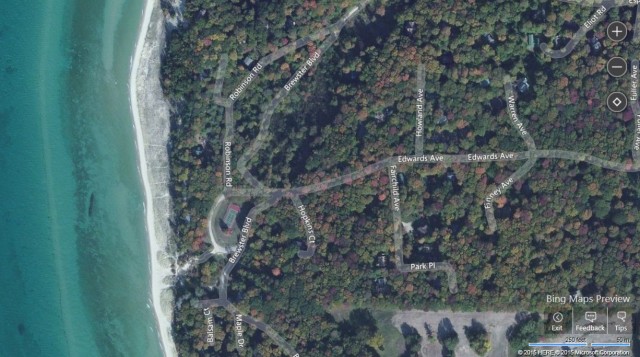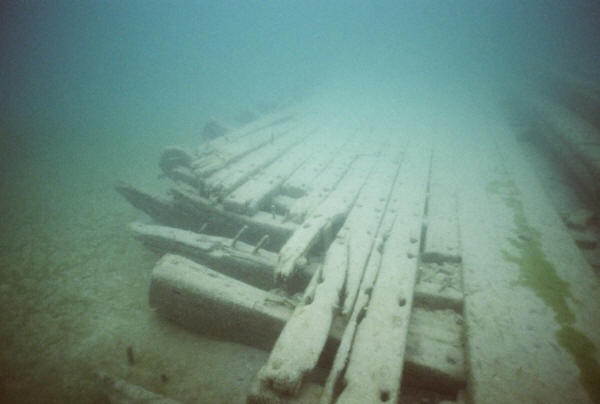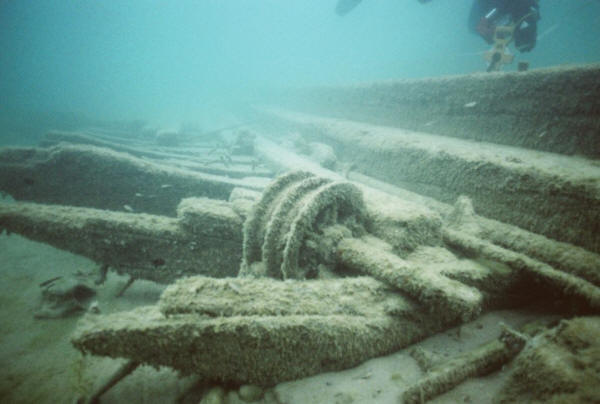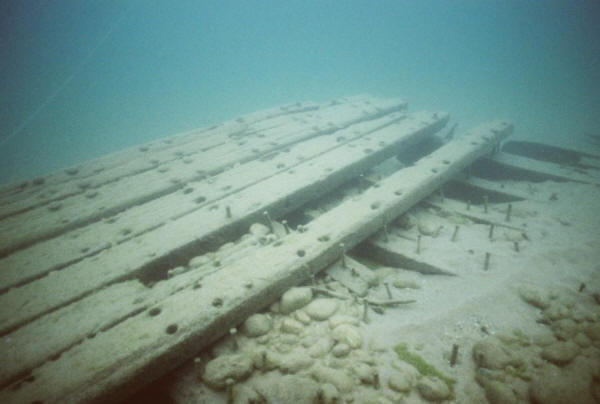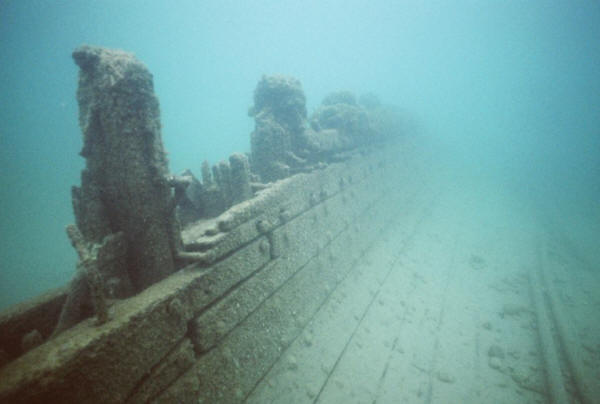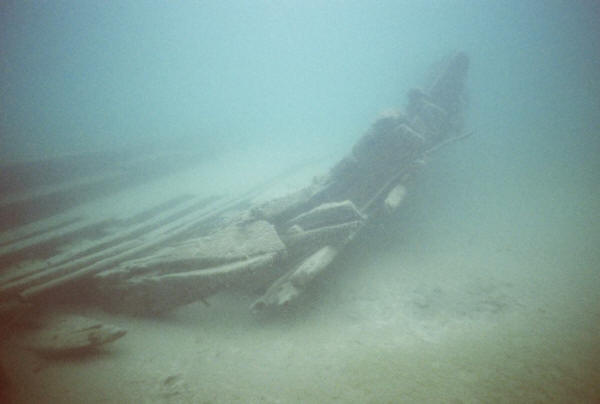44.40.309 86.15.699
(note: Down the left side of this page is a mosaic of the wreck of the St. Lawrence as it lies on the bottom of Lake Michigan in 2009, by Valerie van Heest).

St. Lawrence Mosaic
The wooden propeller St. Lawrence was built by W. B. Morley and J. J. Hill of the Morley & Hill Shipbuilding Company at Marine City, Michigan in 1890. This bulk freighter was first enrolled at Port Huron, Michigan on July 29, 1890. The vessel was 239 feet long, 41 feet wide and 20 feet deep. She was rated at 1,437 gross tons and 1,030 net tons.
The St. Lawrence was under the command of Captain Albert Senghas, bound from Chicago for Prescott, Ontario, Canada, with a bulk cargo of 64,000 bushels of corn at time of the loss.
In a fierce early winter storm on November 25, 1898, the vessel drove ashore and stranded two miles south of the Point Betsie light on Lake Michigan. The storm was raging so loudly that the crew did not hear the fog signal from the light.
It is said that the Lifesaving Service crew, using a Lyle Gun, fired a line toward the sound of the ship’s whistle in a blinding gale. Their accuracy was amazing as the line became entangled in the ship’s whistle cord, so that when the lifesavers pulled the line from shore, it blew the unseen ship’s whistle.
The crew members were rescued by the Lifesaving Service boat with one exception as one crew member was lost from the yawl in high sees. Captain Senghas was the last to leave his stranded vessel.
The wreck went to pieces two weeks later, on December 9, 1898, after unsuccessful salvage attempt by the tug Favorite. On Saturday, December 10, 1898, the Port Huron Daily Times reported, “At Frankfort, the steamer St. Lawrence is fast going to pieces from the heavy seas. Wreckage from her forward and aft cabins is coming ashore. Hundreds of bushels of corn are being gathered along the beach by farmers and citizens for miles around.”
Some later reports say that a wrecking company from Muskegon was able to pull her off and tow her there in June of the following year, however, her final enrollment was surrendered at Port Huron, Michigan on May 3, 1899.
In June, 1899, the E. G. Crosby Transportation Co. of Muskegon, Michigan is reported to have paid the underwriters $1,300 for everything of value in the wreck of the steamer, later advertising for sale all of the machinery consisting of engines, boilers, steam windlass, etc.
Capt. Albert Senghas died two years later, on September 11, 1900 in the wreck of the John B. Lyon. Senghas left a wife and two children, a boy aged 2 years and a girl of 5.
In the fall of 2008, the constantly moving sands of Lake Michigan again shifted dramatically and a number of other shallow water wrecks became visible in the Frankfort area. Local resident and MSRA affiliate Jed Jaworski identified a number of these sites. He was joined by Jack and Valerie van Heest to document those wrecks. The lack of zebra mussels indicates these vessels had not been exposed for very long.
Below are underwater photos of the St. Lawrence taken by Valerie van Heest in 2008.



